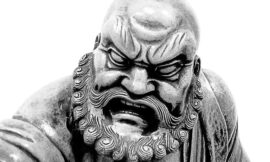No, the tea tree oil does not come from tea tree or tea plant. This question is often asked as the names “tea tree oil” and “tea tree” can be misleading. They refer to completely different plants and products:

-
-
Tea Tree Oil:
Tea tree oil, also known as Melaleuca oil, is derived from the leaves of the Melaleuca Alternifolia tree, which is native to Australia. Despite its name, this tree is not related to the tea plant that is used for producing tea leaves. In fact tea plant is more of a shrub than a tree.
-
Tea tree oil is extracted through a process called steam distillation. The leaves of the Melaleuca alternifolia tree are harvested, crushed, and then subjected to steam distillation to extract the oil. Tea tree oil is renowned for its antibacterial, antifungal, and anti-inflammatory properties, and it is commonly used in various personal care and skincare products.
-
-
Tea:
Tea, on the other hand, comes from the Camellia Sinensis plant. The leaves of the Tea Plant or Camellia Sinensis plant are used to produce different types of tea, including green tea, black tea, white tea, oolong tea, and others.
-

The tea plant is an evergreen shrub native to East Asia, particularly China, India, and Japan. The leaves are harvested and processed through different methods, including withering, rolling, oxidation, and drying, depending on the desired type of tea. The processing techniques influence the flavour, colour, and characteristics of the final tea product.
It’s worth noting that the tea plant, Camellia Sinensis, is not related to the Melaleuca Alternifolia tree, from which tea tree oil is derived. The use of the term “tea tree” in both cases can be confusing, as they refer to different botanical species and distinct products.
So to answer the question in the heading, the tea ‘shrub’, Camellia Sinensis is completely unrelated to and different from the ‘Tea Tree’ plant, Melaleuca Alternifolia, interms of their biological family botanical qualities as well as area of origin and cultivation.




